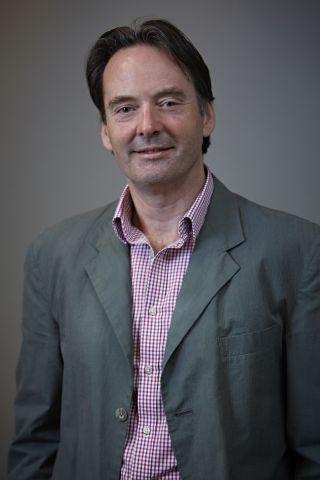
Professor Peter Currie is a based at Monash University in Victoria, Australia, where he is the Victorian node head for the EMBL Australia Partner Laboratory. He leads research focused on the molecular mechanisms that act to pattern the vertebrate embryo and how different muscle cell types have evolved. His work is centred on understanding how the small freshwater zebrafish is able to build and regenerate both skeletal and cardiac muscle.
Professor Currie started his research career at Syracuse University, New York, USA, where he received his PhD in Drosophila genetics. From there he moved to the UK to undertake a post-doc in zebrafish development at the Imperial Cancer Research Fund (now Cancer Research UK) in London. He has worked as an independent laboratory head at the UK Medical Research Council Human Genetics Unit in Edinburgh, UK and the Victor Chang Cardiac Research Institute in Sydney, Australia where he headed a research programme focused on skeletal muscle development and regeneration.
As well as his appointment to EMBL Australia, in 2016 he was appointed Director of the Australian Regenerative Medicine Institute at Monash University in Melbourne, Australia. He is a recipient of a European Molecular Biology Organization Young Investigators Award and a Welcome Trust International Research Fellowship and currently is a Principal Research Fellow with the National Health and Medical Research Council in Australia.
You can read Professor Curries’ full bio on the EMBL Australia website.
The Currie Group aim to uncover how early embryonic cells become individual muscle cells later in development. Here they look at two types of muscle groups – the axial muscles, which form around the head and trunk, and the appendicular muscles, those which form the muscles of the fins.
Another component of the Currie Group’s research looks at the stem cell ‘buddy stem’. In collaboration with researchers from the Garvan Institute of Medical Research, the Currie Group were the first to identify what triggers haematopoietic stem cell (HSC) production. HSCs, which are found in the bone marrow and the umbilical cord, are important for replenishing the body’s supply of blood cells. The group discovered that HSC is in fact formed with help from another type of cell – endotome cells. Using zebrafish as a model, the team has potentially unlocked a way to trigger stem cell production in blood. The work detailing how one of the most important stem cells in blood and bone marrow, the haematopoietic stem cell, is formed was published in Nature in 2014. In 2015, this work won the prestigious Eureka Prize for Scientific Research.
The Currie Group is continuing their research in the mechanics of stem cell generation to help find a cure for a range of blood disorders and immune diseases. In May this year, the Currie group published its research findings with a paper in the prestigious Science journal titled “Asymmetric division of clonal muscle stem cells coordinates muscle regeneration in vivo”. It is the first time scientists have been able to see the stem cells involved in muscle repair, directly viewed in living muscle tissue.
The incredible work by the Currie group in regenerative biology and developmental biology has been recognised in the prestigious journal Nature this year. In May, the group published an article titled, “Regeneration: Muscle stem cells show dual purpose”. In July they published another article on the evolution of the fin-to-limb transition of zebrafish, “A somitic contribution to the apical ectodermal ridge is essential for fin formation”. Peter recently won the NH&MRC Research Excellence Award for the Highest Ranked NH&MRC Project Grant.
Congratulations and well done to Peter and his group on their outstanding research.